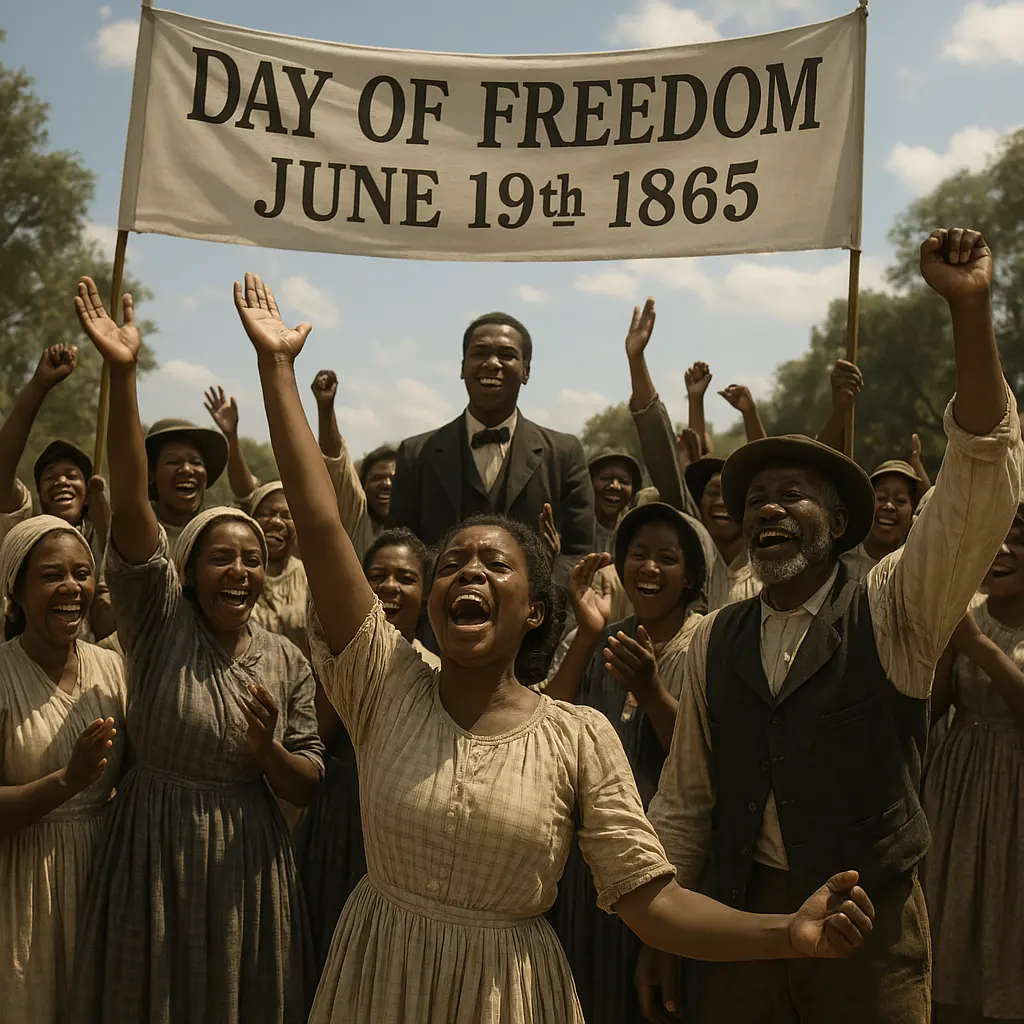By Esther Claudette Gittens
Juneteenth traces directly to June 19, 1865, when Union Maj. Gen. Gordon Granger landed in Galveston, Texas, and issued General Order No. 3, declaring the emancipation of enslaved people in Texas. Though the Emancipation Proclamation was signed on January 1, 1863, enforcement in remote Confederate territories like Texas was delayed. Thus, Granger’s arrival symbolized the true liberation of approximately 250,000 individuals still in bondage—some 900 days after Lincoln’s announcement and 71 days after Lee’s surrender at Appomattox
From that moment, formerly enslaved people and their descendants in Texas began holding annual “Jubilee Day” celebrations. These gatherings served dual purposes: they were spiritual and social commemorations combining church services, communal meals, and speeches, and they were also political forums where freed populations received vital information about voting rights and civic participation
Early Growth: From Texas to the Nation
The observance, called “Juneteenth” by the 1890s, originally had strong Christian influences—most notably through ceremonies integrating religious observance with oral histories of slavery and freedom. It became a statewide event in Texas by 1872, when Black leaders even purchased property in Houston to establish Emancipation Park, ensuring a secure space for annual gatherings.
By the early 20th century, Juneteenth had spread throughout the South. Celebrations could attract tens of thousands: for instance, Limestone County hosted around 30,000 attendees at Booker T. Washington Park by 1898. During the Great Migration, Black families relocating northward carried the tradition with them—ensuring that cities like Oakland, Milwaukee, and Chicago cultivated their own Juneteenth celebrations.
Decline and Revival: The Jim Crow Era through Civil Rights
Juneteenth’s prominence saw a dip throughout the early 20th century. Systemic racism, Jim Crow laws, and economic pressures (e.g., the Great Depression) constrained celebrations. Many Black families migrated north for work, and the loss of communal land and resources made organizing large gatherings more difficult.
However, revival efforts in the 1930s to 1950s reenergized the holiday. In 1938, the Texas governor issued a formal proclamation celebrating Juneteenth, and celebrations started attracting up to 200,000 attendees in Dallas by 1936. During the 1960s–70s, amid rising civil rights activism, Juneteenth acquired renewed resonance. It was recast as an affirmation of African American identity and empowerment; June 19 became known as “Solidarity Day” during various equality campaigns.
This resurgence extended to local initiatives: Houston launched large-scale commemorations in 1974; by 1978, Milwaukee’s celebration drew more than 100,000 attendees. And in 1979, Texas became the first U.S. state to adopt Juneteenth as a paid state holiday, largely through the efforts of Texas state legislator Al Edwards, who also established annual prayer breakfasts and readings of the Emancipation Proclamation at historic sites.
Symbolic Support: National Recognition and Cultural Visibility
From the 1980s onward, Juneteenth’s visibility rose steadily. The Juneteenth flag, designed in 1997 by Ben Haith and later refined by Lisa Graf, became a unifying symbol: its star represents both Texas and freedom in all 50 states; the rising arc reflects hope and a new beginning.
Meanwhile, cultural productions—books, museum exhibitions, and feature film episodes—helped elevate awareness nationally. For instance, Smithsonian exhibits (1991), and episodes of Atlanta (2016) and Black-ish (2017), brought Juneteenth into broader public consciousness.
In the 2000s and 2010s, advocacy by activists like Opal Lee—hailed as the “grandmother of Juneteenth”—led to increased political and public attention. At age 89, Lee walked from Fort Worth to Washington, D.C., urging Congress to formally acknowledge the holiday. Her efforts helped drive the number of formally recognizing states to 45 by 2016–17, and to 47 by 2019.
Becoming a Federal Holiday: The 2021 Turning Point
A historic breakthrough occurred when Congress passed the Juneteenth National Independence Day Act, establishing June 19 as a federal holiday. The Senate unanimously approved the bill on June 15, 2021, followed by the House on June 16. President Joe Biden signed it into law on June 17, 2021—making Juneteenth the first new federal holiday since Martin Luther King Jr. Day in 1986.
At the signing ceremony, Opal Lee was honored alongside President Biden—a symbolic passing of the torch from grassroots to government. Juneteenth became the nation’s eleventh federal holiday, with federal employee closures, bank holidays, and observances nationwide.
Today: A National Celebration and Moment for Reflection
With federal status, Juneteenth is now widely acknowledged as “America’s second Independence Day.” Annual observances routinely include community festivals, parades, church services, food fairs, historical reenactments, artistry, voter registration drives, and educational programs—especially aimed at uplifting Black culture and youth identity.
The holiday also lives on globally: Black Seminole descents in Mexico’s Coahuila hold el Día de los Negros on June 19, echoing Texas origins. Meanwhile, the Juneteenth flag flies across municipalities, schools, elected offices, and civic spaces—signaling broad cultural acceptance and celebration of African American lineage.
Reflections and Implications
Historical recognition: Juneteenth encapsulates the complex timeline of emancipation—not just a singular date of freedom, but an evolving narrative filled with delay, local survival, suppression, and revival. Understanding its journey highlights how freedom in America was unevenly enforced, requiring persistence from Black communities to secure its promise.
Symbolic authority: The progression from community event to federal holiday underscores the transformative power of grassroots activism. The story of Opal Lee and Texas legislator Al Edwards demonstrates how individuals can reshape national memory over decades.
Contemporary significance: Juneteenth’s modern celebrations serve three purposes: to celebrate freedom and Black achievement; to educate the public about systemic injustices and the human cost of slavery; and to agitate for ongoing equality and civic engagement. It’s not merely a day off—it’s a reminder of both a painful past and a hopeful future.
Challenges ahead: While formal recognition is important, substantive equity and anti-racist policies remain essential. Observances must remain more than ceremonial—they must translate into sustained policy change, community investment, and educational reform.
Conclusion
Juneteenth’s evolution—from Galveston’s 1865 Jubilee to federal holiday status in 2021—reflects a profound journey in America’s reckoning with racial justice. Rooted in grassroots remembrance, enriched through cultural affirmation, and solidified by legislative success, Juneteenth today stands as both a commemoration of emancipation and a call to ongoing action. Its history reminds us that freedom is never fully delivered—it must be actively claimed, celebrated, and defended.




